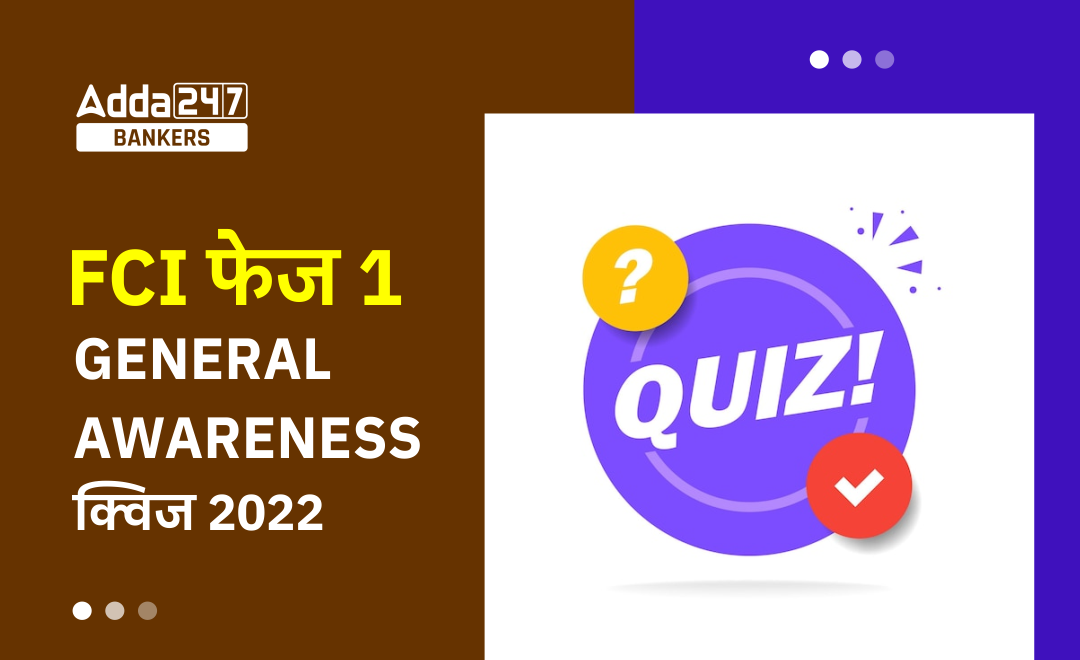Q1. जब किसी ठोस को गर्म किया जाता है तो वह सीधे गैस में बदल जाता है। यह प्रक्रिया कहलाती है-
(a) संघनन
(b) वाष्पीकरण
(c) उच्च बनाने की क्रिया
(d) प्रसार
(e) उपरोक्त में से कोई नहीं
Q2. एक तराशा हुआ हीरा इसकी वजह से चमकता है-
(a) कठोरता
(b) उच्च अपवर्तक सूचकांक
(c) हीरे द्वारा प्रकाश का उत्सर्जन
(d) हीरे द्वारा प्रकाश का अवशोषण
(e) उपरोक्त में से कोई नहीं
Q3. प्रकाश का रंग इसके द्वारा निर्धारित होता है-
(a) आयाम
(b) तरंग दैर्ध्य
(c) तीव्रता
(d) वेग
(e) उपरोक्त में से कोई नहीं
Q4. जर्मन सिल्वर मिश्रधातु है-
(a) सोना और चांदी
(b) तांबा और चांदी
(c) तांबा, जस्ता और चांदी
(d) तांबा, जस्ता और निकल
(e) उपरोक्त में से कोई नहीं
Q5. बुलेट प्रूफ विंडो बनाने के लिए निम्नलिखित में से किस पॉलिमर का उपयोग किया जाता है?
(a) पॉली कार्बोनेट
(b) पॉलीयूरेथेन
(c) पॉलीस्टाइनिन
(d) पॉलियामाइड्स
(e) उपरोक्त में से कोई नहीं
Q6. निम्नलिखित में से कौन सा विटामिन हार्मोन की तरह कार्य करता है?
(a) विटामिन ए
(b) विटामिन बी
(c) विटामिन सी
(d) विटामिन डी
(e) उपरोक्त में से कोई नहीं
Q7. ट्यूबलाइट भरी हुई है
(a) सोडियम वाष्प
(b) कम दबाव पर आर्गन गैस
(c) कम दबाव पर पारा वाष्प
(d) मर्क्यूरिक ऑक्साइड और आर्गन गैस
(e) उपरोक्त में से कोई नहीं
Q8. पीतल मिश्रधातु है-
(a) तांबा और लोहा
(b) जस्ता और लोहा
(c) तांबा और जस्ता
(d) लोहा और निकल
(e) उपरोक्त में से कोई नहीं
Q9. ताप बढ़ने पर द्रव की श्यानता –
(a) बढ़ जाती है
(b) कम हो जाती है
(c) अपरिवर्तित रहती है
(d) तरल की प्रकृति के आधार पर बढ़ या घट सकती है
(e) उपरोक्त में से कोई नहीं
Q10. निम्न में से कौन शरीर में संक्रमण से लड़ता है?
(a) आरबीसी
(b) डब्ल्यूबीसी
(c) रक्त प्लाज्मा
(d) हीमोग्लोबिन
(e) उपरोक्त में से कोई नहीं
S1.Ans. (c)
Sol. Sublimation is the transition of a substance directly from the solid to the gas phase without passing through the intermediate liquid phase.
S2. Ans. (b)
Sol. Diamonds have a very high refractive index (about 2.42 compared to about 1.5 for glass). The amount of light reflected at an air/other material interface is related to the refractive index charge at the interface and the bigger the refractive index change, the more light is reflected. Thus, diamond reflects large amount of light and therefore, sparkles more.
S3.Ans. (b)
Sol. Wavelength is the distances between two points of the wave in the same phase. It is related to frequency and energy of the radiations. It helps in determining colour of light waves. The wavelength of light visible to eye falls between 400nm to 800nm.
S4.Ans. (d)
Sol. German silver is an alloy of copper (25-50%), zinc (25- 35%) and nickel (10-35%). It is used in utensils and resistance wire.
S5.Ans. (a)
Sol. Bullet-proof windows are constructed using several layers of polycarbonate and/or laminated glass.
S6. Ans. (d)
Sol. Vitamin D is a steroid hormone, a group of fat-soluble secosteroids that plays a vital role in calcium and phosphate absorption. Vitamin D also enhances intestinal absorption of calcium, iron and magnesium, while vitamin A deficiency causes night blindness, vitamin C deficiency causes scurvy and vitamin B deficiency causes beriberi.
S7.Ans. (d)
Sol. Tube light is filled with mercuric oxide and argon gas where mercuric oxide is used to emit UV light while argon gas is used to provide an inert atmosphere within the tube.
S8. Ans. (c)
Sol. Brass is an alloy of copper and zinc. The proportions of zinc and copper can vary between different types of brass alloys having different mechanical and electrical properties.
S9. Ans. (b)
Sol. The viscosity of the liquid tends to decrease with the increase in temperature. The temperature effect on viscosity is different for liquid and gases.
S10. Ans. (b)
Sol. Different types of WBCs or white blood cells help in fighting against infectious agents. These are named as macrophages, lymphocytes etc.



 RRB Section Controller Previous Year Que...
RRB Section Controller Previous Year Que...
 PNB LBO परीक्षा में पूछे गए GA के प्रश्न...
PNB LBO परीक्षा में पूछे गए GA के प्रश्न...
 IBPS RRB Previous Year Questions Papers:...
IBPS RRB Previous Year Questions Papers:...








